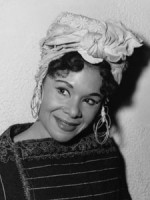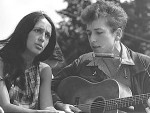Title
Art cannot be separate from society. It is human expression. It improves society. It is not an elective in life’s curriculum, but an essential component. The beauty of the arts and their awesome power of communication are understood by all, and have been utilized by man since civilization’s very beginnings.
The arts and social activism have always gone hand-in-hand. After being refused permission to sing to an integrated audience in Constitution Hall, contralto Marian Anderson made history on Easter Sunday in 1939 by singing to a crowd of 75,000 at a concert on the steps of the Lincoln Memorial.
Katherine Dunham, who established the first permanent, self-subsidized African-American dance company in the 1930s, was a strong presence in dance and activism throughout her life.
Folksingers Joan Baez and Bob Dylan, whose protest songs defined a generation, were inspired by Martin Luther King Jr.’s message of social equality.
Body
The potency of the performing arts is witnessed daily in Juilliard’s concert halls, theaters, and rehearsal rooms. As the School moves toward the 20th annual celebration of the life of Dr. Martin Luther King Jr. on January 21 in Paul Hall, it is an appropriate time to reflect on the effectiveness of the arts as a communicative tool in the struggle for social change
“Dr. King delivered a universal message that was vital for our collective conscience and the evolution of this country,” observes James Houghton, Richard Rodgers Director of Juilliard’s Drama Division. “He had the discipline, courage, and ability to articulate, in a broad way, an essential question that changed us all for the better. At their best, the arts reflect the conscience of the community they serve—and that conscience is often revealed through art first. Dr. King taught us that we have a responsibility as artists to listen, to act upon, and to articulate questions of the collective conscience with relentless courage and at all costs.”
Throughout the 20th century, performing artists significantly informed the societal conscience through activism. From the earlier part of the century—represented by Martha Graham’s protest against war in the pain and suffering of her work Deep Song (1937), inspired by the Spanish Civil War (1936-1937)—to the later part of the century, in John Corigliano’s Symphony No. 1 (1991), which powerfully reflects upon great grief over friends lost to the AIDS epidemic, artistry has spurred social change.
Dr. King’s path was also informed by many great artists who blazed the trail prior to the mid-century civil rights rallies. In dance, Katherine Dunham established the first permanent, self-subsidized African-American dance company in the 1930s, and she continued to be a strong presence in dance and activism throughout her life. Her dramatic ballet Southland (1951) explored racial injustice as witnessed in a lynching, and protests the vicious power of hate. Dunham’s courageous stand against oppression at that time cost her dearly, and after the premiere of the work at the Opera House in Santiago, Chile, her applications for United States government support and subsidies were denied. Other choreographers followed her example, including Daniel McKayle, notably in his Rainbow 'Round My Shoulder (1959), a dance protest against the cruelty of chain gangs in the American South.
The American theater has been informed by writers such as Langston Hughes. A line from his poignant poem “A Dream Deferred” inspired the title of A Raisin in the Sun, which premiered in 1959 and was the first play produced on Broadway written by an African-American woman, Lorraine Hansberry, and directed by an African-American director, Lloyd Richards. Named the best play of 1959 by the New York Drama Critics’ Circle, it ran for nearly two years. The play was truly an education for Broadway’s largely white audiences because it introduced realities of African-American life in the 20th century, far removed from the comedic stereotypes of the day. It was also the first play that drew a large number of African-American patrons to the theater. In addition, A Raisin in the Sun addressed issues of feminism ahead of their time.
Music has provided fertile territory for highlighting and addressing injustice. The great contralto Marian Anderson, whom Arturo Toscanini lauded as having a voice “heard once in a hundred years,” was refused permission in 1939 to sing to an integrated audience in Constitution Hall. The District of Columbia Board of Education also declined a request to use the auditorium of a white public high school for the concert.
In response to these rebuffs, first lady Eleanor Roosevelt; Walter White, chief secretary of the N.A.A.C.P.; and impresario and manager Sol Hurok persuaded Secretary of the Interior Harold L. Ickes to arrange an outdoor concert on the steps of the Lincoln Memorial. On this powerful historic moment on Easter Sunday, 1939, Anderson performed in a concert that included a stirring rendition of “America” (“My Country 'Tis of Thee”), for a crowd of more than 75,000 and a radio audience of millions. In 1943, she did sing for an integrated audience at Constitution Hall, and on January 7, 1955, she became the first African-American to perform with the Metropolitan Opera, appearing as Ulrica in Giuseppe Verdi’s Un ballo in maschera.
The 1949 Broadway musical South Pacific, by Richard Rodgers and Oscar Hammerstein II, was also brave in its exploration of racial prejudice. The score included the song “You’ve Got to Be Carefully Taught”—which Rodgers and Hammerstein were counseled to remove, because its lyrics denouncing racial prejudice were considered by many too controversial for the stage. (When the musical was on tour, one legislator decried the song as “a threat to the American way of life,” according to Andrea Most in her article “‘You’ve Got to Be Carefully Taught’: The Politics of Race in Rodgers and Hammerstein’s South Pacific,” Theater Journal, Vol. 52, No. 3 [October 2000].) James Michener, upon whose stories South Pacific was based, recalled (as quoted in Hugh Fordin’s Getting to Know Him: A Biography of Oscar Hammerstein II) that Rodgers and Hammerstein “replied stubbornly that this number represented why they had wanted to do this play, and that even if it meant the failure of the production, it was going to stay in.” This was a powerful stance in the pre-civil rights climate for a commercial production on Broadway. South Pacific was awarded the Pulitzer Prize for drama in 1950.
The rich soundtrack of the civil rights movement ranged from spirituals and blues and gospel to folk song. Freedom songs such as “Ain’t Gonna Let Nobody Turn Me ’Round” and “O, Freedom”—along with folk and protest songs, including “Blowin’ in the Wind” and “If I Had a Hammer”—gave the people a voice and energized activists. Joan Baez was only 15 when she attended one of Dr. King’s rallies addressing nonviolence and social change. Inspired, she (along with Bob Dylan and others) would later join Dr. King at the 1963 civil rights rally in Washington.
Baez, Dylan, and other musicians supported Dr. King’s message after the fashion established by folk singer Woody Guthrie, who had been a labor-union activist earlier in the century. Musicians, in Guthrie style, performed on flatbed trucks in rural areas and asphalt stages in the inner city, singing their powerful messages of protest against injustice and inviting all to join in the song.
The performing arts continue to inspire activism and social change. Stephen Pier, a Juilliard dance faculty member, points out that the arts provide the opportunity for a human response to a situation which may be overt and political. From Dr. King we heard a religious message about a human situation that is overt, needing political action. Both art and religion communicate a deeper essence of our existence that we understand on a profound level.
The social activism embodied by Dr. King is alive at Juilliard through the vision of the School’s administration, students, faculty, and staff. It expresses itself in performance, outreach programs, summer grant programs, and student group initiatives. Under the leadership of President Joseph Polisi, Juilliard has sought to expand the understanding of diversity and inclusion in all of the arts.
Each week, Juilliard’s outreach programs connect through the performing arts with schools and communities that are experiencing a poverty of creative artistic expression because of lack of access and opportunity. An especially beautiful example is the recent ARTreach trip to New Orleans to aid the victims of Hurricane Katrina last spring. There was much work to be done, and Juilliard students were ready to use their unique talents in restoration of both houses and spirits. Drama student Dion Mucciacito, who participated in that trip, says that “the arts inspire possibility. In a community beset on all sides by despair, poverty and cynicism, the arts are a risky thing to put your heart into. It takes imagination, hope, and belief. If we can foster that belief and let it grow, it is then the people, in that place, who are going to change the community.”
L. Michael Griffel, chair of the Music History Department, suggests that Dr. King’s iconic “I Have a Dream” speech inspired artists of every kind to play a role in the civil rights movement. Just as in dreams, so, too, in artistic expressions, the impossible can be turned into the possible. Dr. King, says Griffel, gave people the courage to use their talents as artists to turn his dream into a reality.
The themes of nonviolence, overcoming racism and poverty, and gaining respect addressed by Dr. King will provide dialogue in the realm of the arts in the 21st century, nationally and globally. In performance, art has the power to draw a diverse audience into a world where all exist as a community. Building community: what a responsibility, and what a gift from an artist!
Dr. King went to the mountaintop. He rallied the troops for the uphill march. With Rosa Parks’s heroism in Montgomery back in 1955, the choreography of civil disobedience was thrust onto the American stage. The song that emerged as the anthem of the civil rights movement, “We Shall Overcome,” still resonates throughout the United States and the global community. From stagehand to symphonic artist to arts patron, the journey of arts activism as inspiring social change continues its ascent to the top of the mountain.







